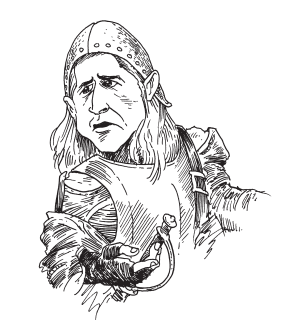By the third scene of David Lean’s Lawrence of Arabia, its hero, a radiant and impossibly blue-eyed Peter O’Toole, has already begun to enjoy his precocious and nearly inexplicable success at something he spends the 1962 movie’s three and a half hours doing: talking people into accepting his version of the world, a version which, on the face of it, seems absurd and untenable. Lean’s Lawrence—which, in the grand tradition of Oscar-winning Hollywood blockbusters, takes a few liberties with the historical record—is, when we first encounter him, a minor staff functionary whose main attribute seems to be an odd intensity, an intensity deployed with uncanny effectiveness to convert to his geopolitical vision spectacularly skeptical, xenophobic, and battle-hardened warrior chieftains from an entirely foreign culture.
How does he do it? That’s of course part of what we, the audience, are meant to be pleasurably wondering. We’re given a few clues—O’Toole is at that point in his life probably the most beautiful man on the face of the earth, after all—but scene after scene seems constructed to communicate to us that the main reason he’s so persuasive is that he’s just so sure. Over and over again, the movie stages scenes of British or Arabic befuddlement at Lawrence’s disconcerting sincerity.
Twenty minutes into a two-hundred-and-sixteen-minute pageant dedicated to supporting the Great Man theory of history, we find Lawrence in the Arabian desert, having talked his bemused superiors into letting him have a go at winning over various tribes of legendary wariness and recalcitrance to the cause of the British Empire. We see him beginning the process of doing so not by the logic of his argumentation but through the force of his personality. Arab after Arab is converted not by what he says but by who he is. And who is he? He is someone who, when all others would lose faith in themselves, refuses to lose faith in himself.
*
Lawrence’s plan—Lawrence’s vision—is, we’re assured by all the experts with whom he comes into contact, somewhere between quixotic and certifiably insane. But then—as our current American president suggested to interviewer Tim Russert during his appearance on Meet the Press this past February 8th, mostly through the amiable inflexibility with which his assurance steamrolled any doubt created by the growing numbers of contradictory facts—part of what it means to have an indefatigably imperial vision of one’s place in the world, of course, is to have a somewhat vexed relationship with what the rest of us call reality.
That’s what makes for visionary leaders, whether they’re the sort that attempt to construct an pan-Arabic alliance behind a British agenda, or a thousand-year Reich.
...
You have reached your article limit
Sign up for a digital subscription and continue reading all new issues, plus our entire archives, for just $1.50/month.
Already a subscriber? Sign in





